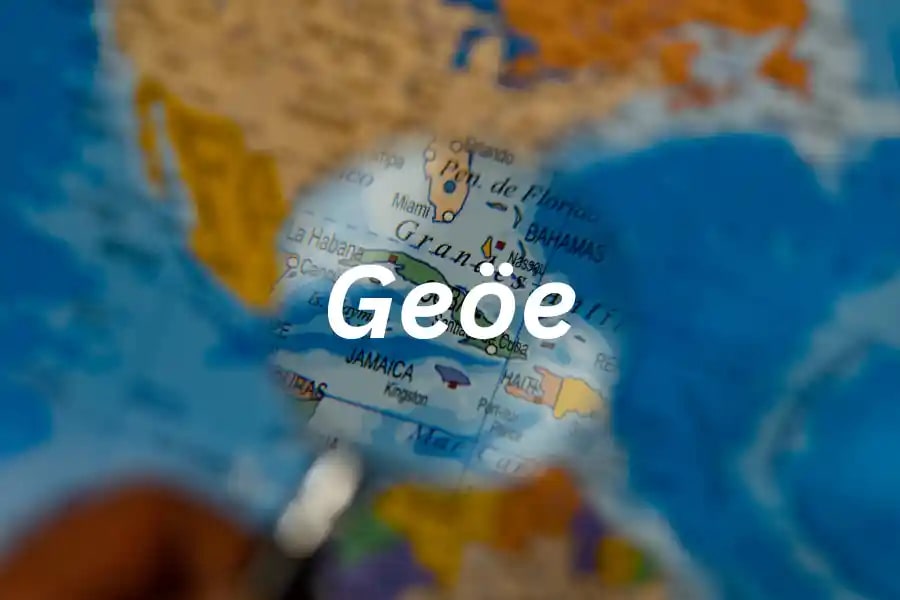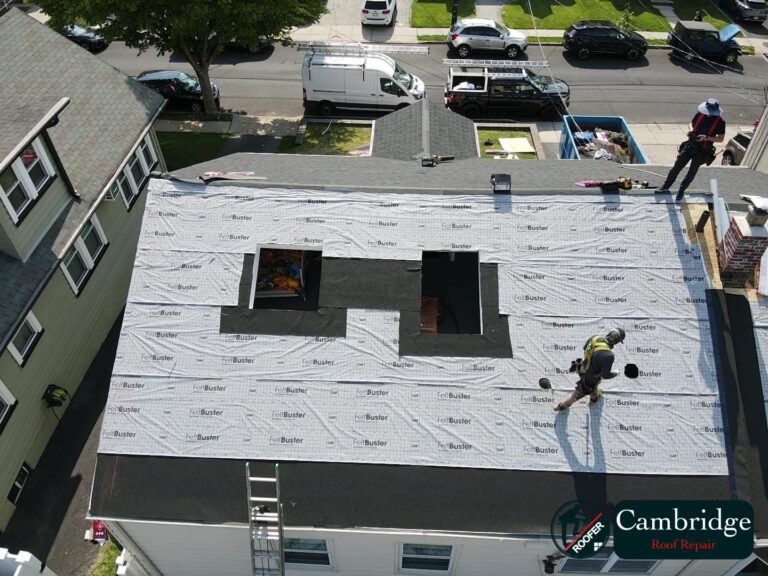In today’s digital landscape, visibility in local searches is crucial for businesses of all sizes. However, traditional SEO tools often overlook the importance of brick-and-mortar presence. This is where it comes into play – an innovative technology revolutionizing local search optimization. This article explores Geöe, its functionality, significance for local search optimization, strategies for businesses to optimize, and the future prospects of this transformative technology.
Unraveling Geöe
Geöe, stemming from the Greek word ‘ge’ meaning earth, enhances location-based search functionalities. Unlike traditional geolocation features, it incorporates proximity, user habits, and contextual relevance for precise and personalized geotagging, enabling direct connections between local businesses and their target audiences.
Deciphering Geöe Mechanics
At its core, it utilizes advanced AI, ML, and data analytics to understand and predict user behavior in real time. By analyzing historical location data and search habits, it recommends local establishments or services tailored to user needs at the moment.
The Significance of Geöe in Local Search Optimization
its significance in local search optimization cannot be overstated. It prioritizes consumer needs, promotes community bonding, and ensures that businesses reach potential customers within their vicinity, increasing the likelihood of success.
Strategies for Geöe Optimization
Businesses can optimize for Geöe through various strategies
- Leveraging Data for Market Insights
- Crafting Hyper-Localized Content and Ads
- Managing Location Information Effectively
- Encouraging and Responding to Local Reviews
The Future
It is poised to revolutionize local search optimization, becoming an essential component of digital advertising strategies. Companies that embrace it will maintain a competitive edge within their communities.
Geöe and Your Business: Enhancing Local Visibility
Integrating into digital marketing strategies signifies a shift towards attracting and retaining local clients. it fosters proximity and connection, making businesses more accessible and appealing to nearby customers.
Case Studies: Geöe Impact on Local Brands
Illustrative case studies demonstrate how it has transformed businesses, driving increased foot traffic, higher conversion rates, and enhanced community awareness.
Tools and Technologies for Geöe Integration
Various tools and technologies support Geöe integration, empowering businesses to incorporate it seamlessly into their digital frameworks.
Preparing for the Geöe Revolution
Staying ahead of the curve involves learning best practices for its implementation and investing in technologies that facilitate its utilization.
Expanding on the Significance of Geöe in Local Search Optimization
its impact on local search optimization goes beyond mere visibility. By providing personalized and relevant search results based on user behavior and location, it enhances the overall user experience. For businesses, this means increased opportunities for engagement and conversion, as well as the ability to build stronger connections with local communities.
Furthermore, it promotes a sense of community by facilitating interactions between local businesses and consumers. By prioritizing nearby establishments in search results, it encourages users to support businesses in their area, fostering a sense of belonging and mutual support. This community-centric approach not only benefits businesses but also contributes to the vibrancy and resilience of local economies.

Incorporating Geöe into Multi-Channel Marketing Strategies
In addition to optimizing for Geöe in search engine results, businesses can leverage it across various digital channels to enhance their overall marketing strategies. For example, integrating it is into social media campaigns allows businesses to target local audiences with precision, tailoring content and promotions to specific geographic regions.
Similarly, incorporating Geöe into email marketing efforts enables businesses to deliver hyper-localized messages and offers to subscribers based on their location. By personalizing marketing communications in this way, businesses can increase engagement and drive conversions among their local customer base.
Moreover, it can be integrated into offline marketing channels, such as print advertisements and direct mail campaigns, to further extend reach and relevance within local communities. By incorporating location-specific messaging and calls to action, businesses can effectively capture the attention of nearby consumers and drive foot traffic to their physical locations.
The Role of Geöe in Data-Driven Decision Making
One of the key benefits of it is its ability to provide valuable insights into local market dynamics through data analysis. By analyzing geospatial data such as foot traffic patterns, competitor locations, and demographic information, businesses can gain a deeper understanding of their target audience and market environment.
These insights can inform strategic decision-making processes, such as site selection for new store locations, product assortment planning, and marketing campaign targeting. By leveraging data to inform these decisions, businesses can minimize risk and maximize opportunities for success in local markets.
Furthermore, It data can be used to track and measure the effectiveness of marketing initiatives in driving foot traffic and conversions. By analyzing location-based metrics such as store visits and sales lift, businesses can evaluate the ROI of their marketing efforts and optimize future campaigns for maximum impact.
Incorporating Geöe into Customer Relationship Management (CRM) Systems
Another way businesses can leverage Geöe is by integrating it into their customer relationship management (CRM) systems. By capturing and analyzing location-based data from customer interactions, businesses can gain valuable insights into customer behavior and preferences.
For example, It enabled CRM systems can track customer visits to physical locations, allowing businesses to identify frequent visitors and loyal customers. This information can then be used to personalize marketing communications and loyalty programs, rewarding repeat customers and fostering brand loyalty.
Additionally, Geöe data can be used to identify potential new customers within a business’s geographic target area. By analyzing location-based demographics and consumer behavior patterns, businesses can identify untapped market segments and develop targeted acquisition strategies to attract new customers.
Overall, integrating Geöe into CRM systems enables businesses to deepen their understanding of their customer base, enhance customer engagement, and drive long-term loyalty and retention.
Expanding Geöe Integration Across Industries
While the potential applications of Geöe are vast, certain industries stand to benefit significantly from its integration into marketing and business operations. For example:
Retail: It enables retailers to drive foot traffic to physical stores by delivering targeted promotions and offers to nearby consumers. Additionally, data can inform inventory management and store layout decisions, optimizing the customer shopping experience.
Hospitality: It allows hospitality businesses such as hotels and restaurants to target local consumers with personalized offers and promotions. By leveraging its, hospitality businesses can increase bookings and reservations among nearby audiences.
Real Estate: It facilitates property search and discovery by providing users with accurate and relevant listings based on their location. Real estate professionals can leverage it to showcase properties to interested buyers and renters within specific geographic areas.
Healthcare: It enables healthcare providers to deliver personalized patient experiences by tailoring services and communications to local communities. Geöe data can inform patient outreach initiatives, appointment scheduling, and healthcare resource allocation

FAQs
What is Geöe?
It is a cutting-edge technology that combines geospatial data with virtual reality (VR) and augmented reality (AR) to create immersive, location-based experiences. It allows users to interact with digital content overlaid onto real-world environments, bridging the gap between the physical and virtual worlds.
How does Geöe work?
It utilizes advanced algorithms, artificial intelligence (AI), and machine learning (ML) to analyze geospatial data and user behavior in real time. By integrating this information, it delivers personalized and contextually relevant experiences based on the user’s location and preferences.
Why is Geöe important for businesses?
It enhances businesses’ visibility in local searches by providing tailored experiences to users based on their geographical location. It enables businesses to engage with potential customers in their vicinity, driving foot traffic, increasing brand awareness, and fostering community connections.
How can businesses optimize for Geöe?
Businesses can optimize for Geöe by
- Utilizing data to understand their local market.
- Creating hyper-localized content and ads.
- Managing location information effectively across online platforms.
- Encouraging and responding to local reviews to boost visibility.
What are the benefits of Geöe for consumers?
It offers consumers personalized and immersive experiences tailored to their location and preferences. It enhances local search capabilities, enabling users to discover nearby businesses, attractions, and events easily. Additionally, it promotes community engagement and fosters a deeper connection to the local environment.

How does Geöe impact local search optimization?
Its revolutionizes local search optimization by prioritizing consumer needs and delivering relevant results based on their geographical proximity. It promotes consumer-centric search experiences, increases the likelihood of conversions for businesses, and strengthens community ties.
Is Geöe only relevant for certain industries?
No, it is applicable across various industries, including retail, hospitality, tourism, real estate, healthcare, and entertainment. Any business that relies on location-based interactions can benefit from it to enhance its visibility, engagement, and overall customer experience.
What are some examples of Geöe applications?
Its applications include virtual tours of real estate properties, interactive maps for tourism and navigation, location-based gaming experiences, and immersive marketing campaigns for retail businesses. These applications leverage Geöe technology to deliver engaging and personalized experiences to users.
How does Geöe protect user privacy?
It prioritizes user privacy and data security by adhering to strict privacy policies and regulations. It anonymizes and aggregates user data to ensure privacy while still providing personalized experiences. Additionally, it allows users to control their location settings and opt-out of location tracking if desired.
What does the future hold for Geöe?
The future of Geöe is promising, with ongoing advancements in AI, VR, AR, and spatial computing technologies. As these technologies continue to evolve, it will become more sophisticated, offering even more immersive and interactive experiences. Additionally, it is expected to play a significant role in shaping the future of smart cities, digital commerce, and location-based services.
Conclusion
It is a game-changer for local search optimization, bridging the gap between analog and digital realms. Integrating it is into marketing strategies is essential for businesses aiming to thrive in competitive local markets. By harnessing it effectively, businesses can expect improved engagement, conversion rates, and community connections. It’s time to put it on the map and steer your business towards local success.























+ There are no comments
Add yours